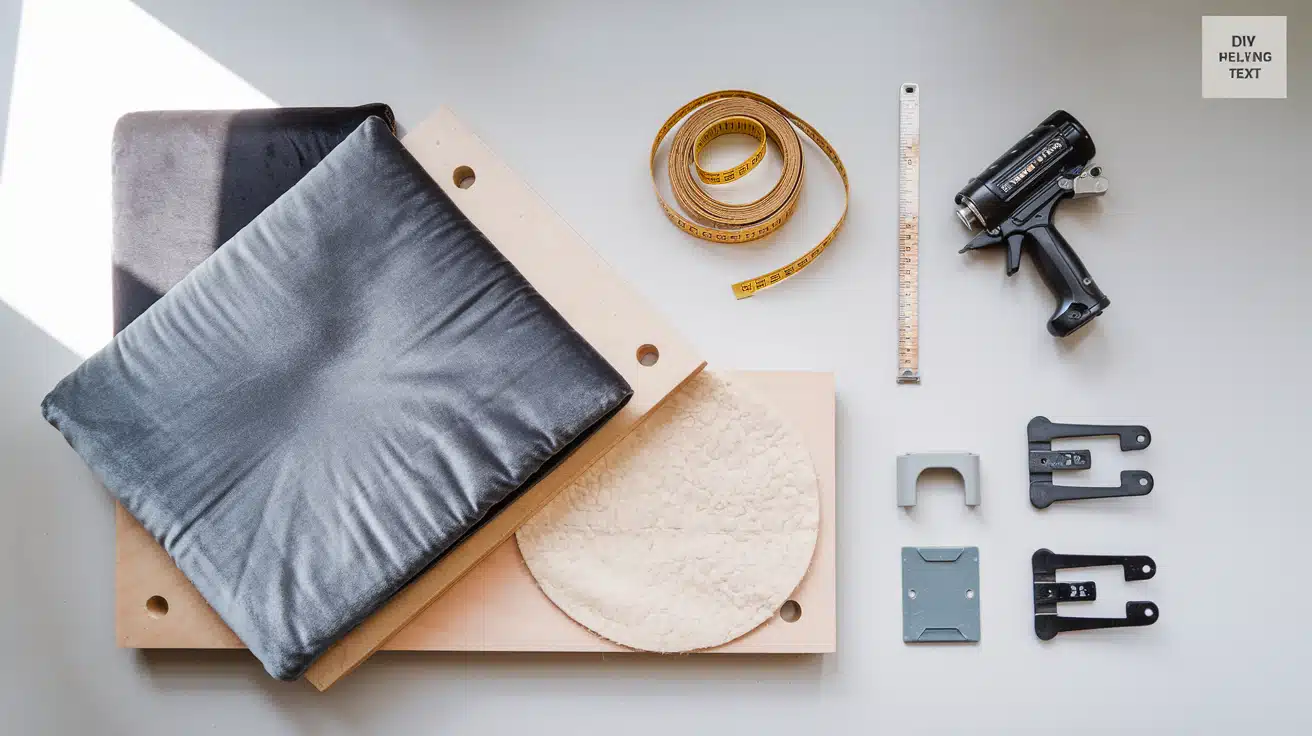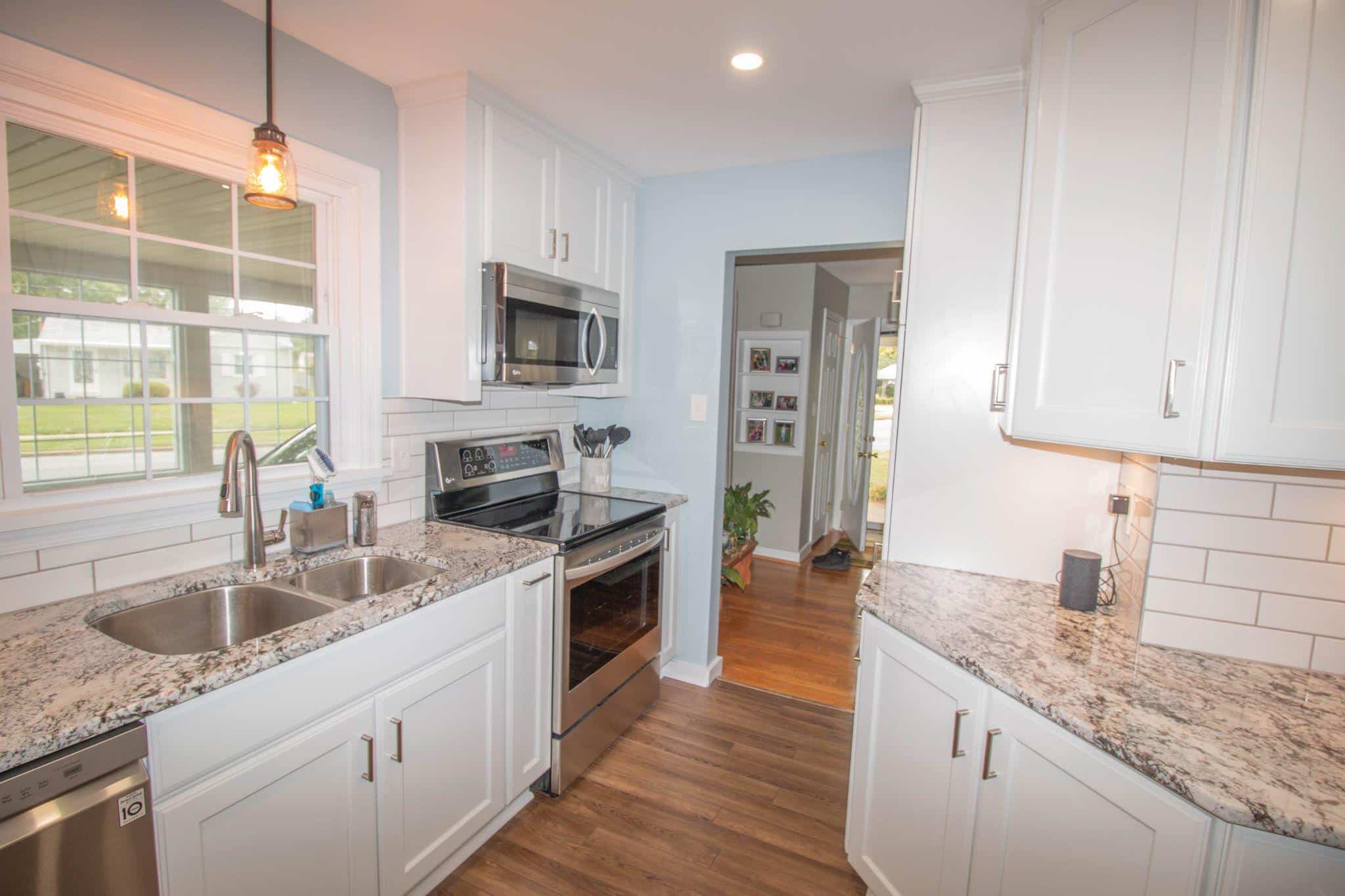Do you stare at blank bedroom walls each night? I get it – those plain walls behind your bed make the room feel empty and flat.
Store-bought headboards cost hundreds or even thousands, and most look mass-produced.
When I searched for a solution, local carpenters quoted prices that hurt my wallet.
But here’s something interesting: you can build a stunning wall-to-wall headboard at home this weekend.
I’ll show you how to create a custom piece that looks like it came from a high-end store using basic materials from your local hardware store.
The best part?
You’ll spend a fraction of retail prices and get your desired style.
Let me walk you through the simple steps.
Essential Materials for Building shiplap headboard
| Category | Details |
|---|---|
| Building Materials |
|
| Tools for Assembly |
|
|
Optional Items |
|
| Material Tips |
|
Remember: Measure twice, buy once. Always get slightly more material than you think you’ll need – it’s better than running short mid-project.
How to Make Your Wall Headboard in 10 Steps
Step 1: Take Measurements
- Measure wall width from edge to edge
- Mark the desired height on your wall
- Write down both measurements, adding 2 inches for adjustments
- Take photos of the wall area on your phone
Step 2: Plan Your Panels
- Break down the total width into manageable sections
- Standard MDF comes in 4×8 feet sheets
- Calculate how many panels you’ll need
- Ask the hardware store to cut MDF to your specs
Step 3: Calculate Material Needs
- Multiply the total width by height for the fabric amount
- Add 6 inches to each dimension for wrapping
- Plan for double the batting size
- List exact measurements for store visits
Step 4: Prep Your Work Area
- Clear a clean, flat workspace
- Lay out drop cloths to protect surfaces
- Set up all tools within easy reach
- Position MDF panels on the work surface
Step 5: Add Padding Layer
- Cut batting to size (4 inches larger than MDF)
- Pull batting tight across the board
- Start stapling from the middle of each side
- Work outward to corners, keeping tension even
Step 6: Master the Corners
- Fold batting at corners like wrapping a gift
- Create clean, flat corner folds
- Secure with extra staples
- Trim excess batting carefully
Step 7: Apply Fabric Cover
- Iron fabric before starting
- Center fabric on padded board
- Pull the fabric tight, starting from the middle
- Secure with staples every 2-3 inches
Step 8: Make Perfect Corners
- Create hospital corners for clean edges
- Remove excess bulk from corners
- Double-check for smooth surfaces
- Add extra staples to secure loose spots
Step 9: Connect Your Panels
- Lay panels face down, edge to edge
- Attach mending plates at seams
- Space plates 12 inches apart
- Check alignment before final tightening
Step 10: Mount to Wall
- Mark stud locations on the wall
- Position mounting brackets
- Use proper wall anchors
- Check the level as you secure each panel
Pro Tips
- Keep staple lines straight for neat edges
- Double-check measurements before cutting
- Test fabric placement before stapling
- Have someone help with the installation
Video Tutorial
Check out this YouTube video by H&M Home for a detailed step-by-step tutorial on making a shiplap headboard.
Design Tips for Your Custom Headboard
Finding Your Perfect Height
- Standard height: 48 inches from floor
- Low-profile look: 36 inches total height
- Statement piece: Up to 54 inches
- Factor in pillow height when deciding
- Consider ceiling height in your room
Bed Base Planning
- Low bed legs work best (under 6 inches)
- No-leg bed frames create a built-in look
- Platform beds pair well with wall-mount design
- Leave a 1-inch gap between the mattress and the headboard
Customization Ideas to Match Your Style
1. Choose the Right Padding
- Use high-density foam for a plush feel.
- A minimum thickness of 2 inches works best for deep tufts.
2. Mark the Tufting Points
- Use a ruler and chalk to create a diamond or square grid.
- Space points evenly to maintain balance.
3. Secure the Buttons
- Wrap matching fabric around buttons.
- Use upholstery thread to pull them tight.
- Staple the thread behind the board to hold them in place.
4. Smooth the Fabric
- Pull the fabric gently to avoid wrinkles.
- Staple at the edges to keep everything firm.
Smart Tips for Success: Building Your Headboard Right
Watch Out for These Common Mistakes
When building your headboard, a few key steps matter most. Check wall studs before mounting to ensure stability. Take time with fabric corner folds to keep them neat.
Use plenty of staples to prevent fabric from slipping. Include padding for comfort and a smooth look. Iron fabric first and measure twice before cutting. Keep your panels level for a clean finish.
Save Money Without Cutting Quality
Smart shopping helps create quality headboards on a budget. Buy fabric during sales seasons for better prices. Look for marked-down MDF boards – minor damage often won’t affect your project.
Old curtains or bedsheets work well as fabric alternatives. Buy basic tools from discount stores. Share tools with friends for items you’ll use rarely. Keep leftover materials for future fixes or small projects.
Keep It Looking Fresh
| Detail | Information |
|---|---|
| Weekly Care | Light dust with a soft cloth. Spot clean any marks quickly, and check for loose edges. |
| Monthly Maintenance | Vacuum with a brush attachment, Inspect all mounting points, Tighten any loose screws, Look for fabric wear spots. |
| Long-term Care | Keep the direct sun off the fabric, Clean spills immediately, Rotate wall art to prevent fading and Check wall attachments twice yearly. |
Quick Fixes
- Keep matching thread handy
- Save extra fabric for patches
- Touch up scuffs with fabric cleaner
- Fix loose corners with discrete staples
- Keep spare mounting hardware
Conclusions
Creating your wall headboard does more than save money—it adds value to your space. With basic tools and a weekend of work, you’ll have a piece that brings style to your bedroom.
Now that you know the steps, pick your fabric and start measuring. Remember, this project isn’t just about following instructions – it’s about making something you’ll see daily.
Take your time with each step, especially the corners and mounting.
Ready to start?
Get your materials list together and head to the hardware store. If you make your headboard using this guide, I’d love to hear how it turned out.
Share your experience in the comments below, or ask questions if you need help.








